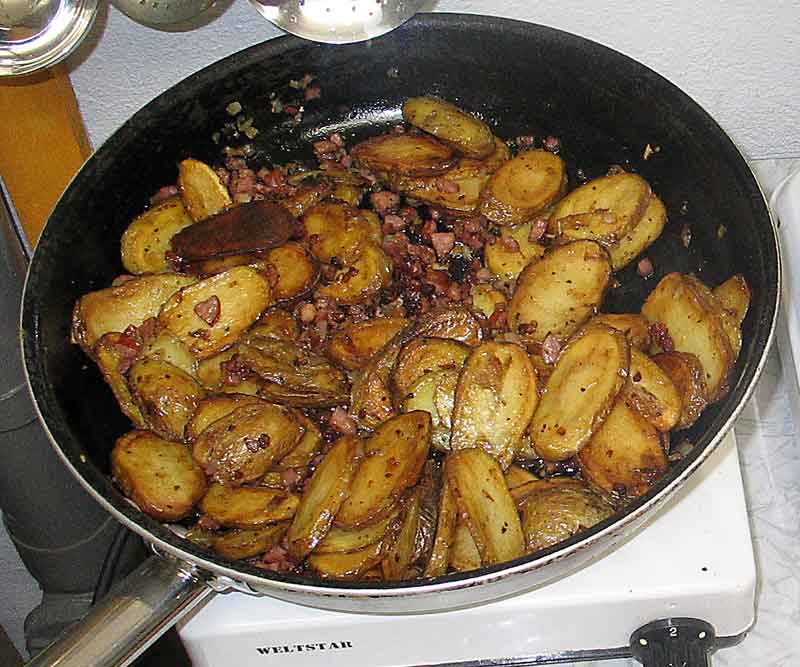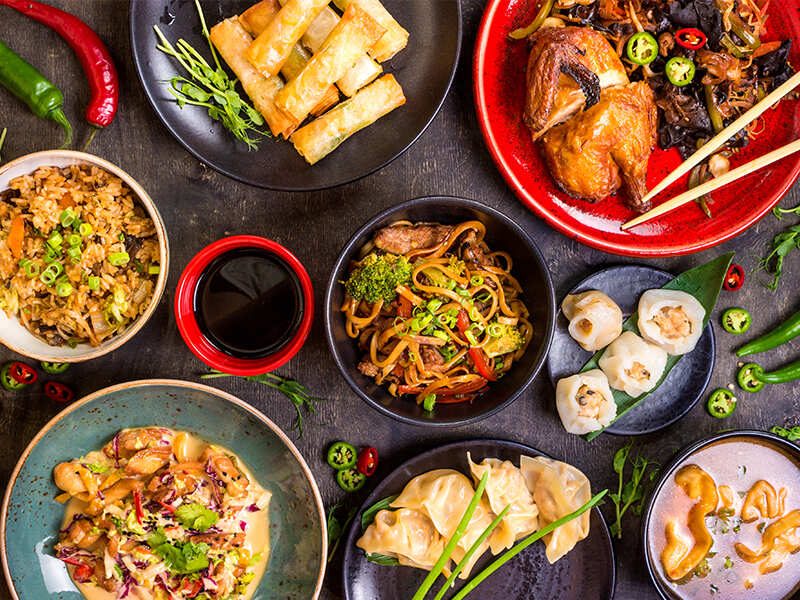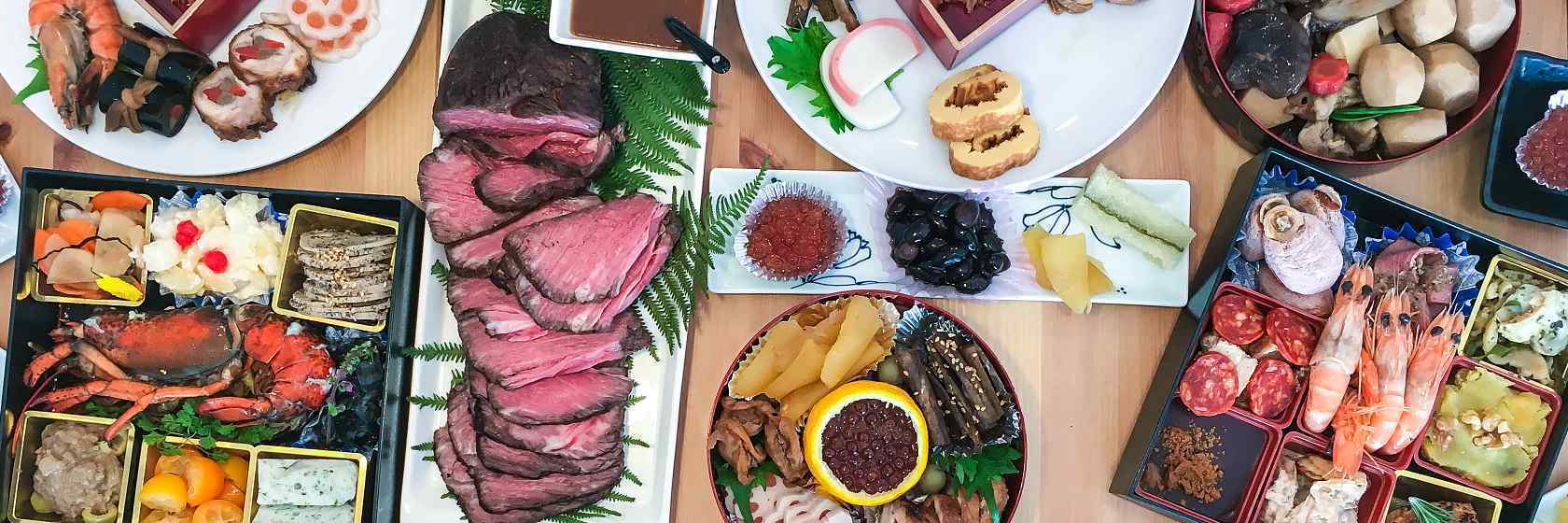

You wondered what a continental food menu was? Every country has its own cuisine. French eat french food, Italians eat Italian food, and Indians eat Indian food, etc. So what exactly is continental food? It’s good to begin by understanding it’s European origins. In Europe people eat smaller portions than we do here in the U.S. Visitors from other countries are amazed at the quantity of food they receive when they order an entree at a restaurant. A continental menu refers to lighter European food fare. So, if you are hungry skip the continental fare and search for something substantial to eat. The best known part of the continental menu is breakfast. A continental breakfast consists of coffee or tea, rolls or pastry with butter and jam, and some seasonal fruit. I always wonder where the rest of the breakfast is. Sadly, there are no eggs, bacon, potatoes, or omelets in a traditional continental breakfast. However, the continental breakfast does look good. Those Europeans have excellent food presentation skills.
Continental food mainly refers to European cuisine. It incorporates the way toward cooking and some sort of unique fixings which is typically not utilized in Indian food. Fixings incorporate fundamentally cheddar, thyme,rosemery, oregano and most significant olive oil. The strategies predominantly incorporate preparing, quick cooking. Adjacent to this cooking styles of Australia, Newzealand, America are additionally perceived as mainland nourishment. The foods of Western nations are various independent from anyone else, despite the fact that there are regular qualities that recognize Western cooking from foods of Asian nations. Compared with traditional cooking of Asian countries, for example, meat is more prominent and substantial in serving-size. Steak and cutlet in particular are common dishes across the West. Western cuisines also put substantial emphasis on grape wine and on sauces as condiments, seasonings, or accompaniments (in part due to the difficulty of seasonings penetrating the often larger pieces of meat used in Western cooking). Many dairy products are utilised in the cooking process, except in nouvelle cuisine. Cheeses are produced in hundreds of different varieties, and fermented milk products are also available in a wide selection. Wheat-flour bread has long been the most common source of starch in this cuisine along with pasta, dumplings and pastries, although the potato has become a major starch plant in the diet of Europeans and their diaspora since the European colonisation of the Americas, particularly in Northern Europe.

Maize is much less common in most European diets than it is in the Americas; however corn meal (polenta or mămăligă), is a major part of the cuisine of Italy and the Balkans. Although flatbreads (especially with toppings such as pizza or tarte flambée), and rice are eaten in Europe, they do not constitute an ever-present staple. Salads (cold dishes with uncooked or cooked vegetables with sauce) are an integral part of European cuisine.Formal European meals are served in particular courses. European introduction developed from administration à la française, or carrying different dishes to the table on the double, into administration à la russe, where dishes are exhibited successively. Generally, cool, hot and flavorful, and sweet dishes are served carefully independently in a specific order, as hors d'oeuvre (starter) or soup, as entrée and principle course, and as pastry.

Dishes that are both sweet and exquisite were regular prior in antiquated Roman cooking, however are today extraordinary, with sweet dishes being served uniquely as treat. A help where the visitors are allowed to take nourishment without anyone else's input is named a smorgasbord, and is normally limited to gatherings or occasions. All things considered, visitors are required to pursue a similar example.
 Generally, European cooking has been created in the European illustrious and honorable courts. European honorability was typically arms-bearing and lived in isolated estates in the wide open. The blade was the essential eating actualize (cutlery), and eating steaks and different nourishments that require cutting pursued. Conversely in the Sinosphere, the decision class were the court authorities, who had their nourishment sliced prepared to eat in the kitchen, to be eaten with chopsticks. The blade was displaced by the spoon for soups, while the fork was presented later in the early current time frame, ca. sixteenth century. Today, most dishes are expected to be eaten with cutlery and just a couple of finger nourishments can be eaten with the hands in well mannered organization.
Generally, European cooking has been created in the European illustrious and honorable courts. European honorability was typically arms-bearing and lived in isolated estates in the wide open. The blade was the essential eating actualize (cutlery), and eating steaks and different nourishments that require cutting pursued. Conversely in the Sinosphere, the decision class were the court authorities, who had their nourishment sliced prepared to eat in the kitchen, to be eaten with chopsticks. The blade was displaced by the spoon for soups, while the fork was presented later in the early current time frame, ca. sixteenth century. Today, most dishes are expected to be eaten with cutlery and just a couple of finger nourishments can be eaten with the hands in well mannered organization.
No comments:
Post a Comment